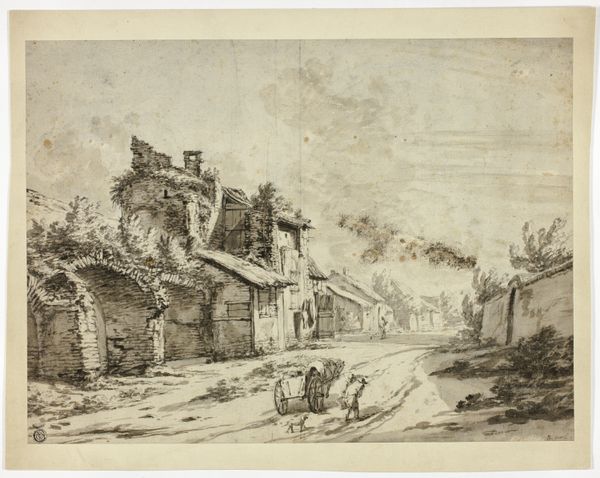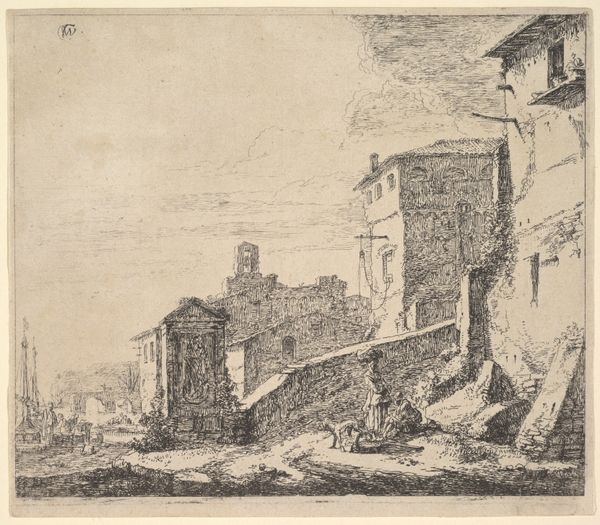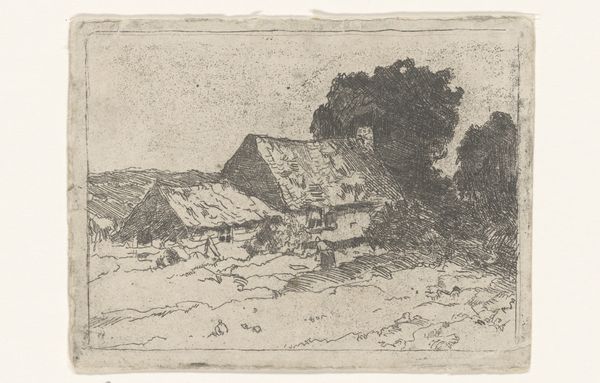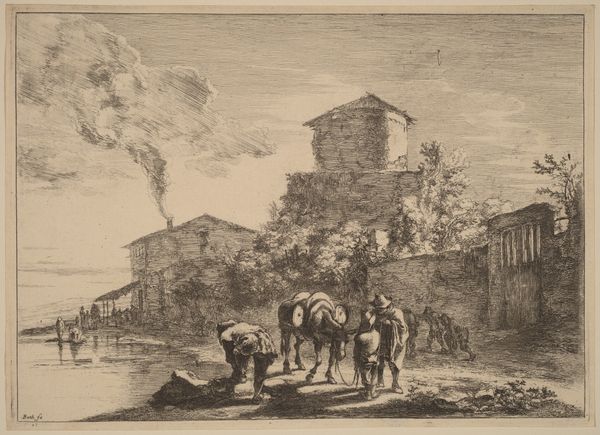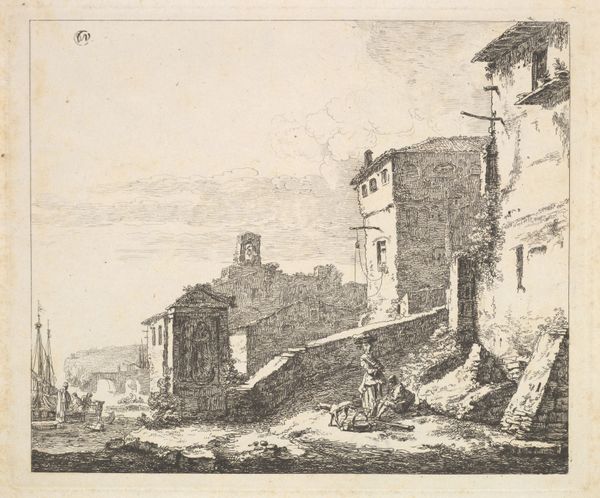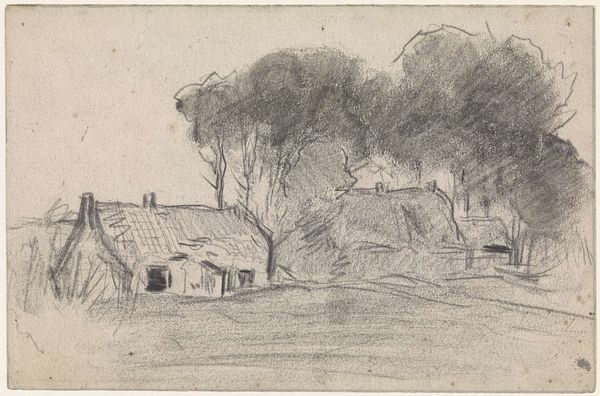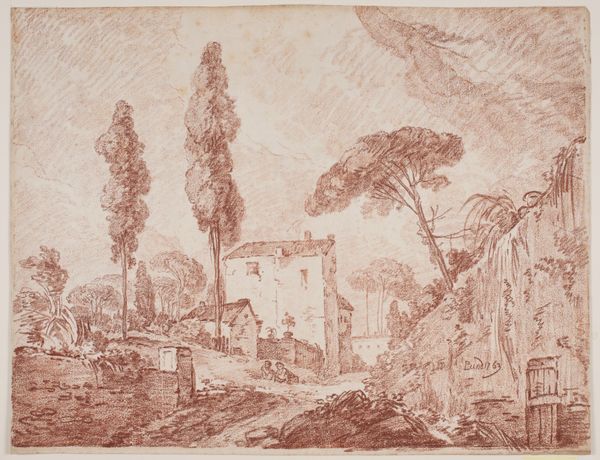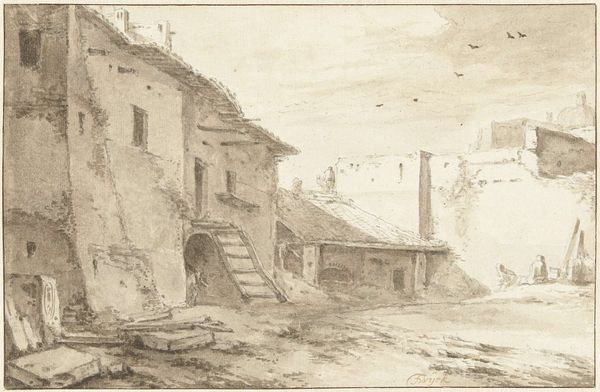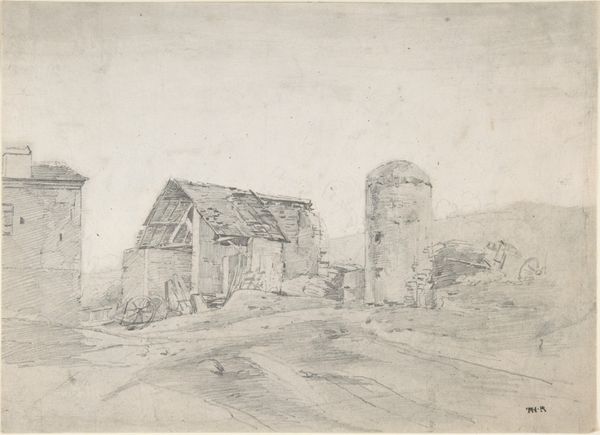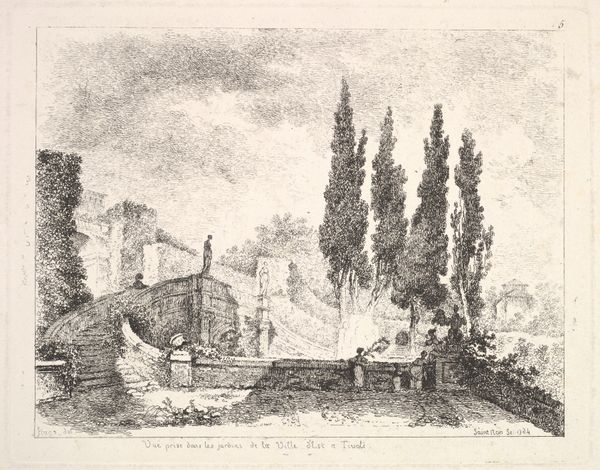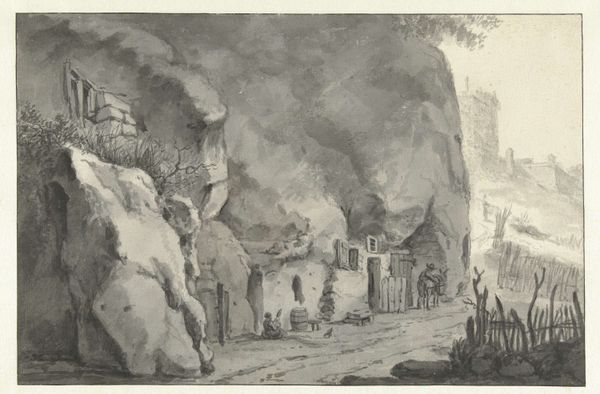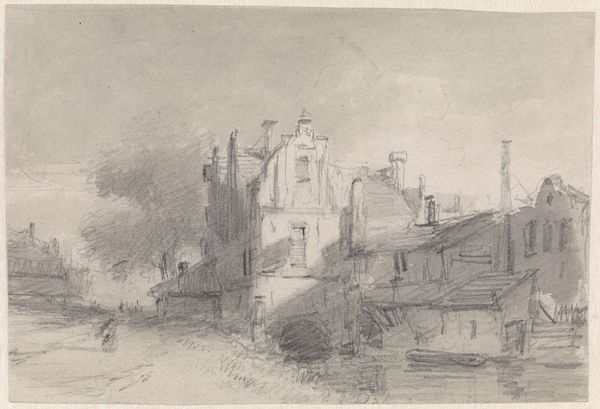
drawing, painting, ink, architecture
#
drawing
#
baroque
#
painting
#
landscape
#
ink
#
14_17th-century
#
architecture
Copyright: Public Domain
Curator: Here we have "Group of houses in Tivoli," a drawing made around 1625 by Bartholomeus Breenbergh. He used brown ink to render the architectural structures nestled in the Italian countryside, now part of the Städel Museum collection. Editor: It evokes a strong sense of pastoral tranquility, yet with this wispy plume of smoke rising into the sky it also conveys such palpable feelings of the domestic, the every day. Curator: Breenbergh was one of the key figures who brought the Italianate landscape tradition back to the Netherlands. You can see here the clear influence of classical architecture, not just in the buildings themselves, but in the way they're presented as part of this harmonious, almost idealized view. This sort of rendering created new appetites for art among burgeoning Dutch mercantile classes. Editor: It's fascinating how he's used the ink to differentiate texture—the rough, crumbling stone of some structures versus the smoother surfaces. The artist almost imbues a spirit, if not directly than as allegory, with human stories rooted to them. What meanings can we extract from these details, I wonder. Curator: Well, consider the symbolic importance of ruins during the 17th century, not just reminders of past glory, but also reflections on time, decay, and the transience of human achievement. Landscape drawings became hugely fashionable status symbols during that period, a taste driven by expanding markets and changing social expectations regarding travel and learning, as much as by genuine appreciation of nature or even of 'ruins.' Editor: And this smoke we were talking about; it contrasts nicely against the stolid masonry, a symbol, maybe, of human activity that rises above even architecture; but also perhaps the fragility of this human endeavor. It connects the sky to home and back again. Curator: Perhaps Breenbergh also included it to give it a more timeless appeal, something beyond his immediate cultural milieu and toward this very day. Editor: Precisely. Art, then as now, capturing these stories and memories. It’s beautiful to think that something like this small ink drawing encapsulates so much.
Comments
No comments
Be the first to comment and join the conversation on the ultimate creative platform.
